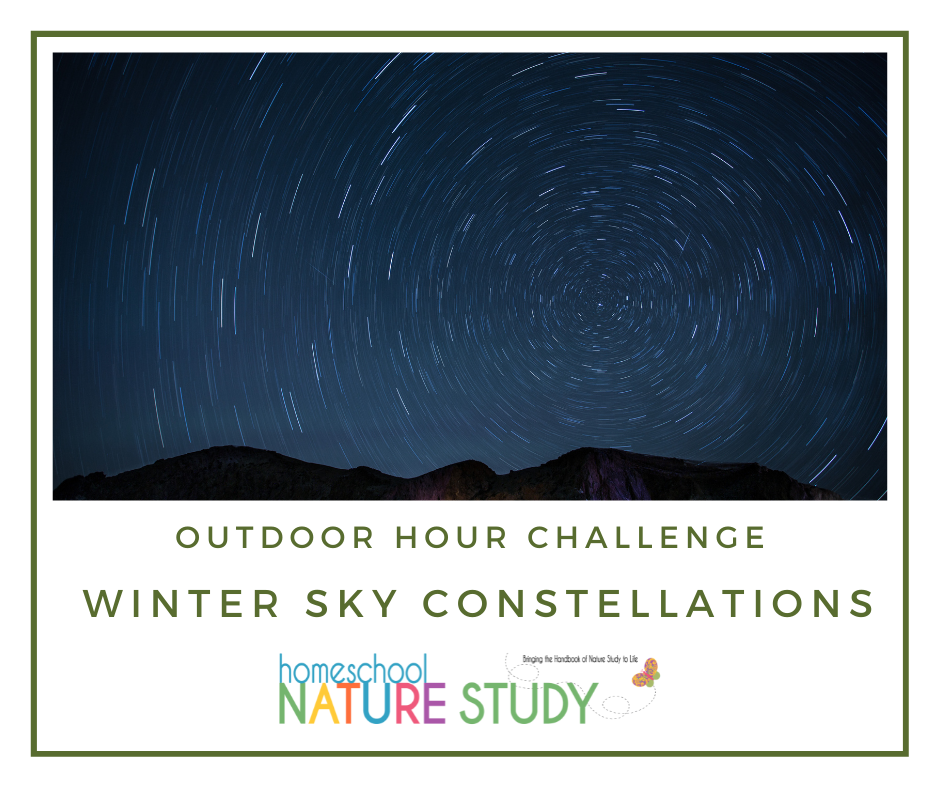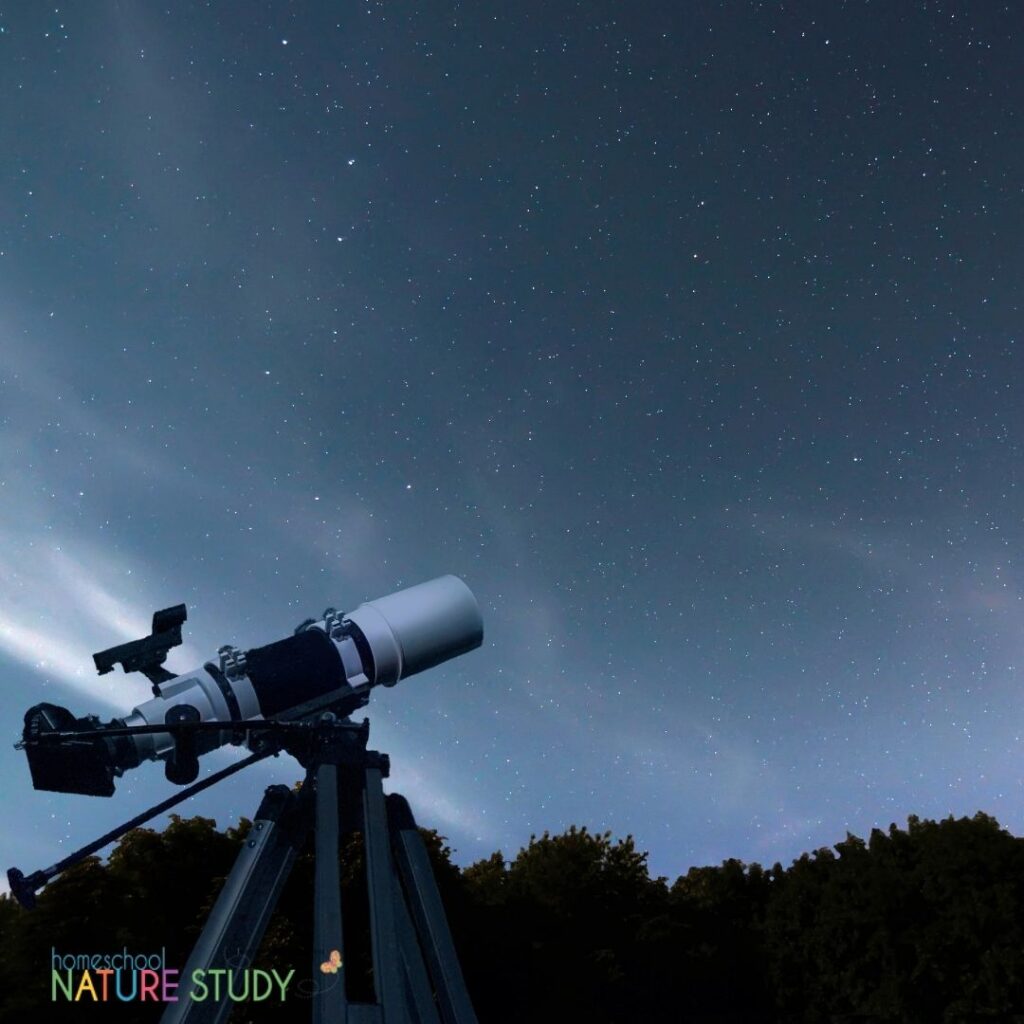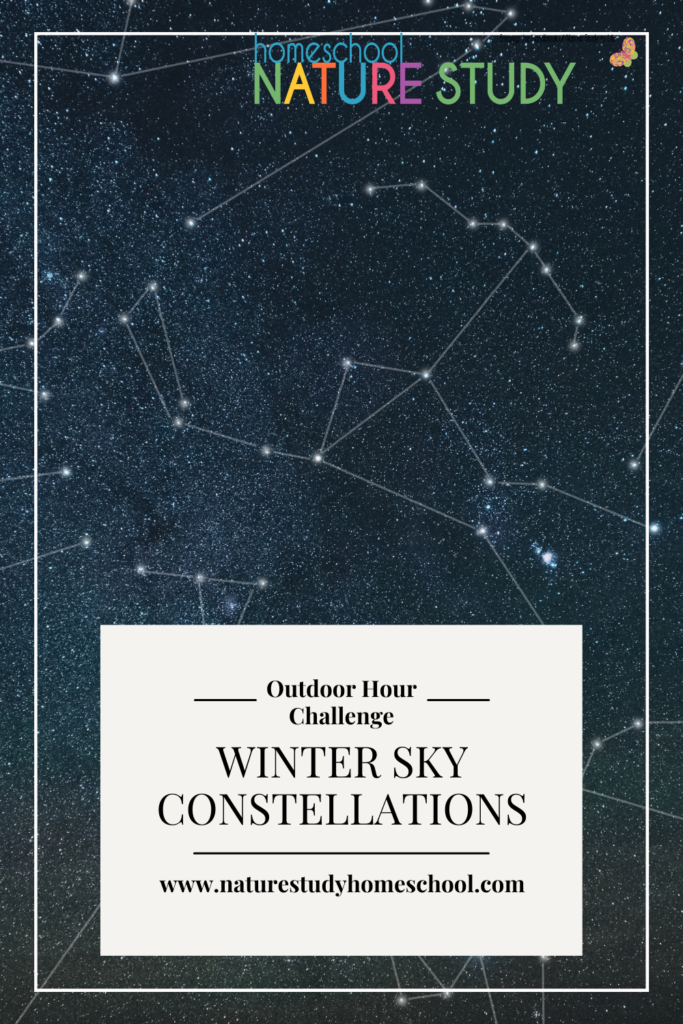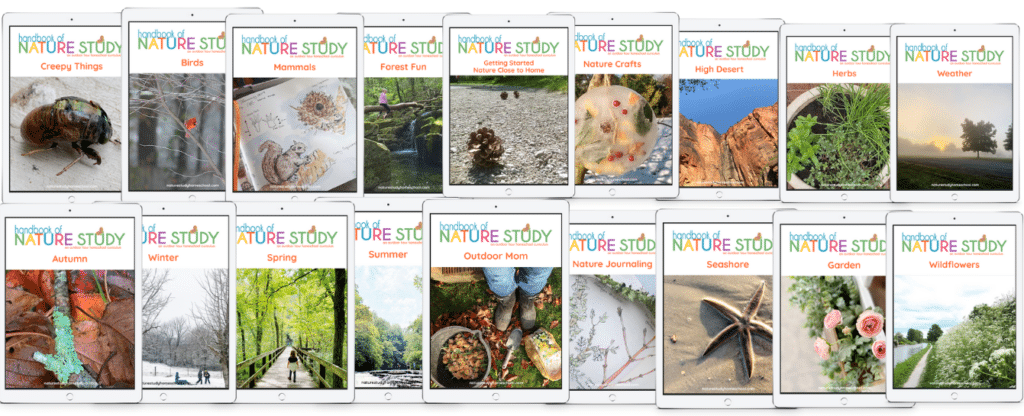
This week’s homeschool nature study outdoor hour challenge looks upward towards the stars, yes, it’s time to learn about the winter sky constellations!
Homeschool Nature Study Winter Sky Constellations: Outdoor Hour Challenge
1. Read chapter three in Discover Nature in WinterWinter stargazing is something that our family has always wanted to do but we have never taken the initiative to get out and do so. Now we have the perfect excuse. Read the chapter with a view to picking some winter stars to learn about and observe as a family. Start with the North Star or Orion’s belt if you are not sure what you are doing yet.
“Unlike owls and other nocturnal creatures, our eyes are not well designed for seeing in the dark. After leaving a lighted building at night, it takes about thirty minutes for our eyes to become adjusted to the lower light levels.”
The Handbook of Nature Study, page 37
Allow plenty of time for your eyes to adjust and to take in the night sky.

- Big Dipper (North Star as well) page 44
- Ursa Major page 45
- Cassiopeia page 47
- Orion (using Orion’s belt) page 49

We do not have a telescope but we use our eyes and sometimes our binoculars to view the night sky. We also plan to bundle up to keep warm and then go inside afterwards for some hot cocoa or apple cider.
3. If you can’t fit in some nighttime stargazing for winter sky constellations, how about some sunset observations? You could also look for the moon as well as stars and write about it in your nature journal. Being able to name a star or constellation is a great skill but it can be just as satisfying to spend some time contemplating the universe while gazing at the stars.
For those families that do not have the book to work from, please join us by going outside at night and observing the winter sky. Try to pick a cloudless night where you can observe plenty of stars. Observing the moon in the winter is a great nature study experience as well. Keep it simple and give it a try.

Winter Sky Resource For Your Homeschool
This website has a wealth of materials to help you map the winter sky!
Join the Homeschool Nature Study Membership for Nature Study Curriculum and Year Round Support
There are so many benefits to joining. You will access our full range of curriculum, our interactive learning calendar as well as a brand new homeschool nature study challenge post each week!

Connect With Our Homeschool Community On Social Media
Did you enjoy this Outdoor Hour Challenge? Be sure to tag us on Instagram @outdoorhourchallenge and use the hashtag #outdoorhourchallenge so we can see and comment!
There are so many benefits to joining. You will access our full range of curriculum, our interactive learning calendar as well as a brand new homeschool nature study challenge post each week!

Connect With Our Homeschool Community On Social Media
Did you enjoy this Outdoor Hour Challenge? Be sure to tag us on Instagram @outdoorhourchallenge and use the hashtag #outdoorhourchallenge so we can see and comment!

Hey Barbara and all,
My uncle is an astronomer in Tucson and posts some awesome information and pics on his blog: http://theketelsens.blogspot.com
Sometimes it’s too scientific for me but his pictures are truly amazing and worth viewing for this challenge!
This was a great activity! While we were not able to see many stars due to light pollution, my investigations into light pollution taught us so much. I love when wondering about something encourages further explorations.
I want to thank you for your wonderful blog. It inspired me to create a blog so we can share the wonderful things we are doing with the Handbook of Nature. Thanks again!